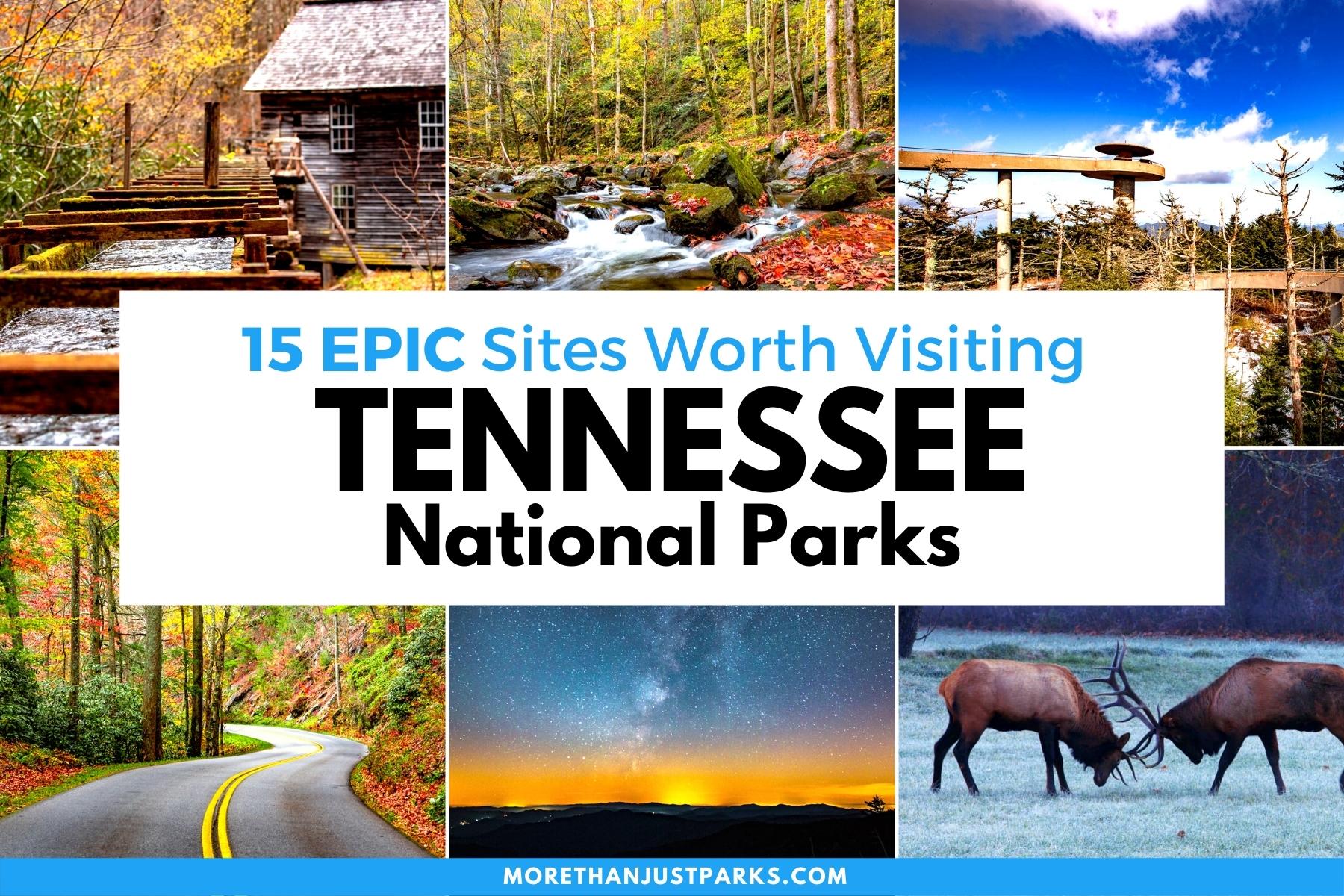
Article Summary: Tennessee National Parks
Tennessee National Parks! We’ve got fifteen incredible national park sites for you to see on your next visit to The Volunteer State.
As a longtime resident of Tennessee’s neighbor to the south, Georgia, I’ve spent a great deal of time in these parks.
I’ve been to so many of these amazing places since retiring from teaching in 2018. Did I mention that I taught history? I spent a lifetime teaching about the history behind these momentous sites. Then I got to see them firsthand. And now I’m sharing the stories of these incredible places with you. It doesn’t get any better than that!
To be clear, this list includes national park sites (as in sites managed by the National Park Service) as well as full-fledged national parks.

So, What Is A National Park?
We get asked that question a lot because there’s a difference between a “national park” and a “national park site.” To help you understand that difference you might want to check out our article titled: What Is A National Park Really?
If you’re planning a trip to the Volunteer State then a book that I highly recommend is: Traveling Tennessee: A Complete Tour Guide to the Volunteer State from the Highlands of the Smoky Mountains to the Banks of the Mississippi River by Cathy Summerlin.
We’re going to give you 15 reasons why you’ll want to make Tennessee your next vacation destination.
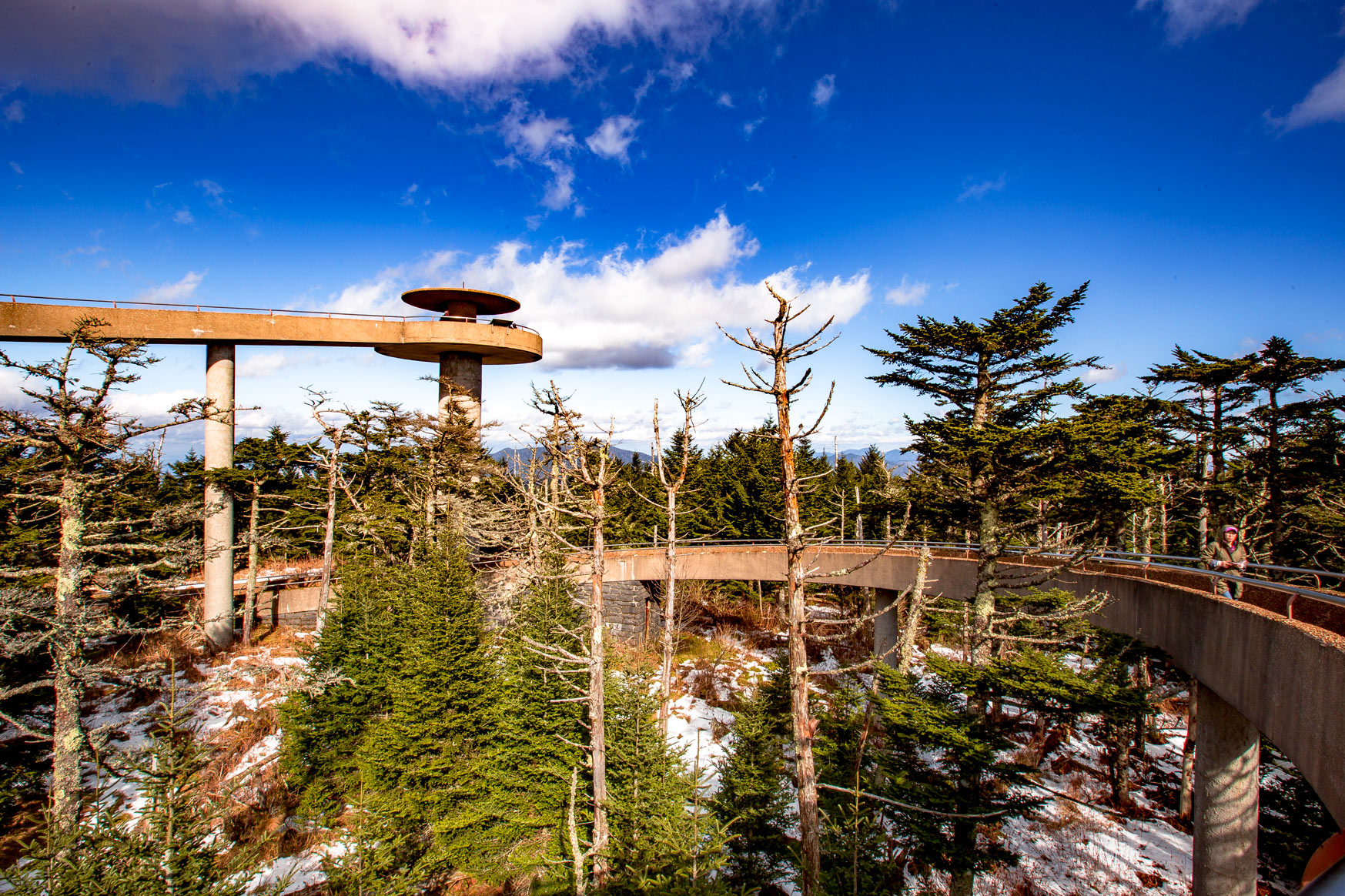
Table Of Contents: Tennessee National Parks
Tennessee National Parks
1. Great Smoky Mountains National Park
No trip to the Tennessee National Parks would be complete without a visit to the Great Smoky Mountains. Since it’s the most important stop in my humble opinion I’m going to free it from the alphabet and place the Great Smoky Mountains at the top of the list of our list of Tennessee National Parks.
The Great Smoky Mountains National Park is the is the most visited national park in the country and a true monument to the beauty of the Appalachians.
Established in the depths of the Great Depression by generous local communities, wealthy philanthropists like John D. Rockefeller Jr., and the U.S. government, this pristine area was spared from further logging and development and is now a premiere outdoor destination belonging to all Americans.
Nestled in the misty mountains of Tennessee and North Carolina, Great Smoky Mountains is easily one of the most beautiful national parks on the planet.
If you don’t believe me, visit in the fall and you’ll see exactly what I’m talking about – more on that later!
If you’re wondering how crowded the park is considering it’s the most visited national park in the country – you might be surprised by the answer.
While it certainly depends on where you go in the park and what time of year you visit, Great Smoky Mountains doesn’t see anywhere near the crowding that parks like Zion or Yosemite do these days.
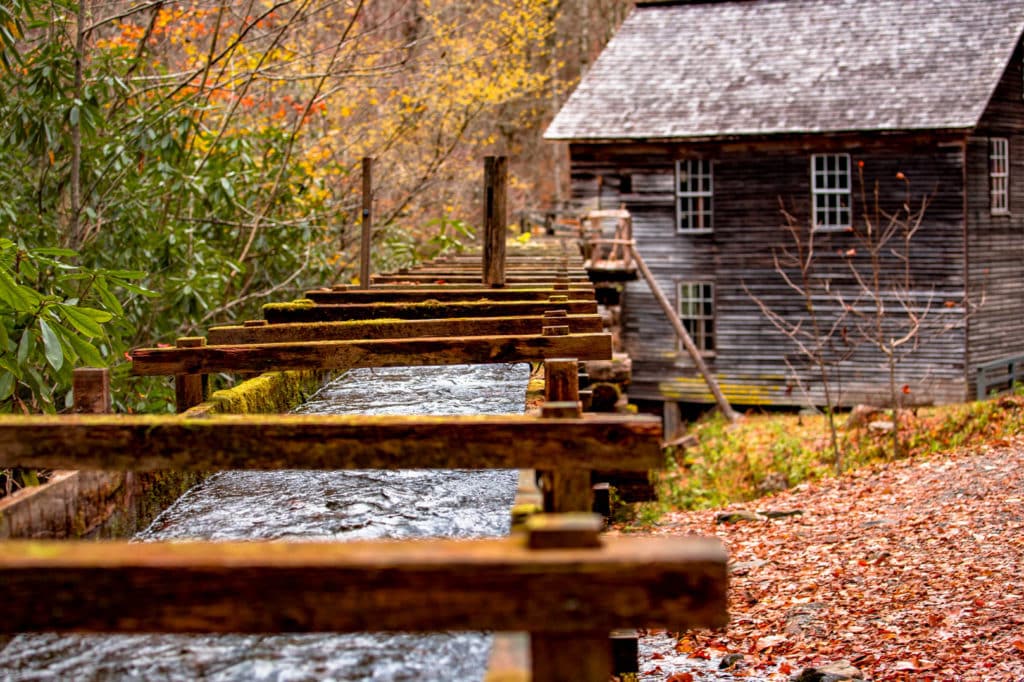
About Great Smoky Mountains
Nestled in the heart of the Southern Appalachian Mountains is a place where time seems to have stood still.
Here are the last remains of the ancient forests that once dominated the Eastern United States.
In the words of President Franklin Roosevelt,
“there are trees here that stood before our forefathers ever came to this continent; there are brooks that still run as clear as on the day the first pioneer cupped his hand and drank from them.”
These misty mountains are home to America’s most visited national park, a land of vast hardwood forests, clear mountain streams, frontier cabins, and iconic wildlife.
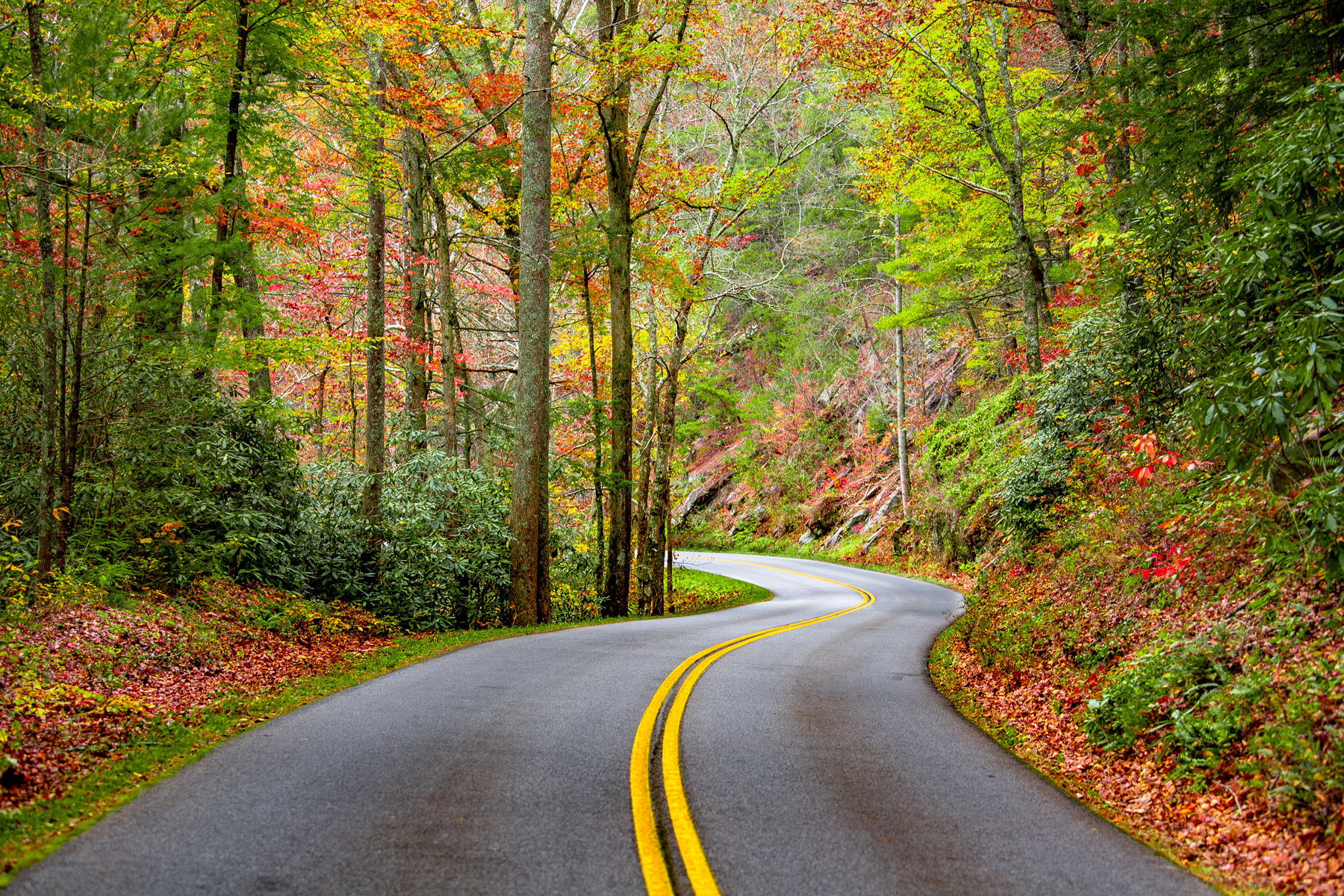
CHECK OUT: 15 AMAZING Facts About Smoky Mountains National Park
Watch Our Award-Winning Video
This video is the culmination of two weeks exploring Great Smoky Mountains National Park. We chose Great Smoky Mountains as our second park because of it’s extraordinary display of fall colors, it’s incredibly diverse wildlife population, and it’s importance as the most visited national park in the country. This film was shot entirely in 4K UHD.
We chose to capture this park in the Fall as it is home to one of the most wonderful displays of fall foliage on the planet. Fall is also a wonderful time to watch the elk rutting season and experience cooler, less humid temperatures.
Best Things to Do in Great Smoky Mountains National Park
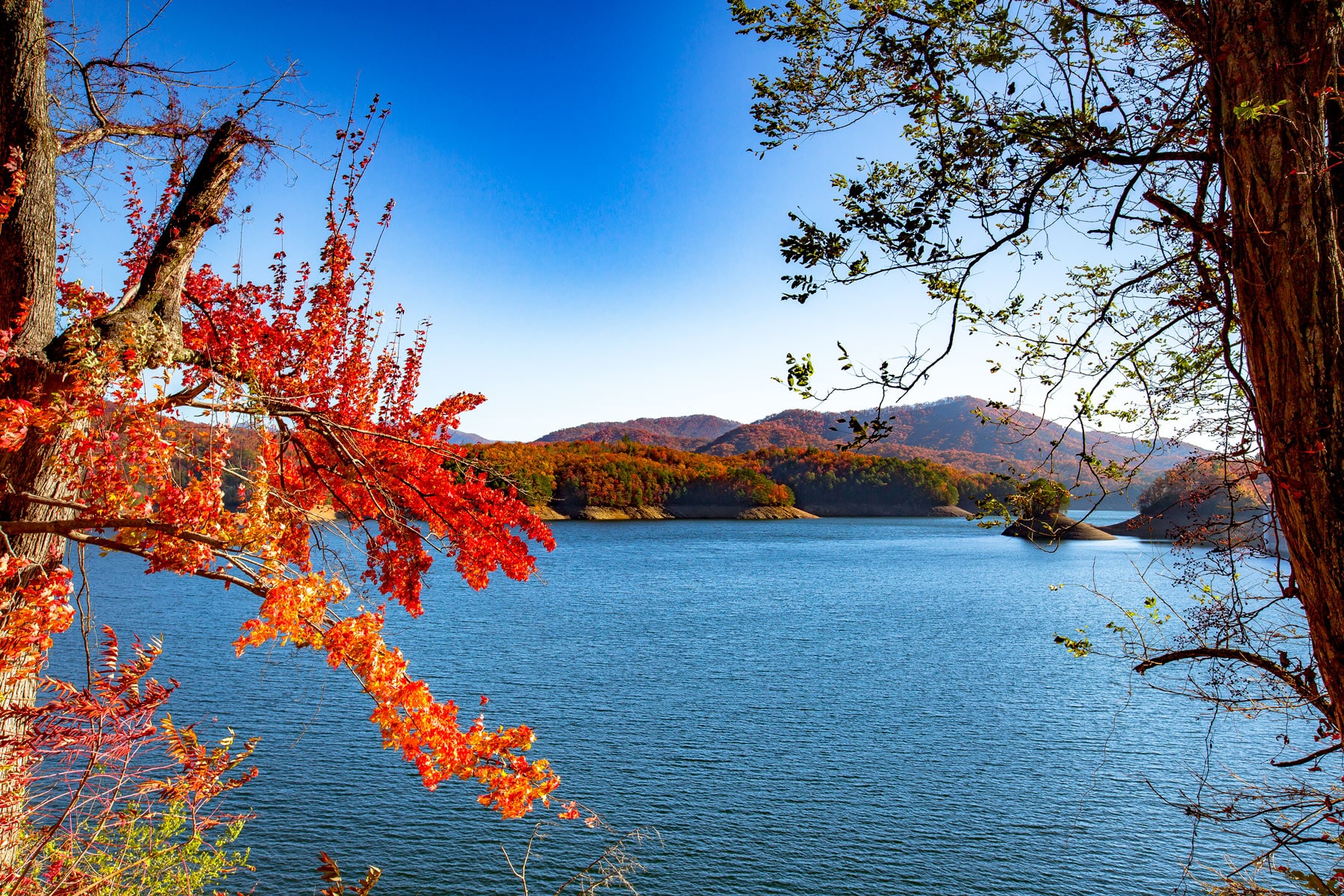
Go Leaf Peeping
Fall in the Great Smoky Mountains is simply spectacular with burning red oaks and brilliant yellow and orange maples. The park is home to many varieties of deciduous trees which turn fantastic colors in the fall.
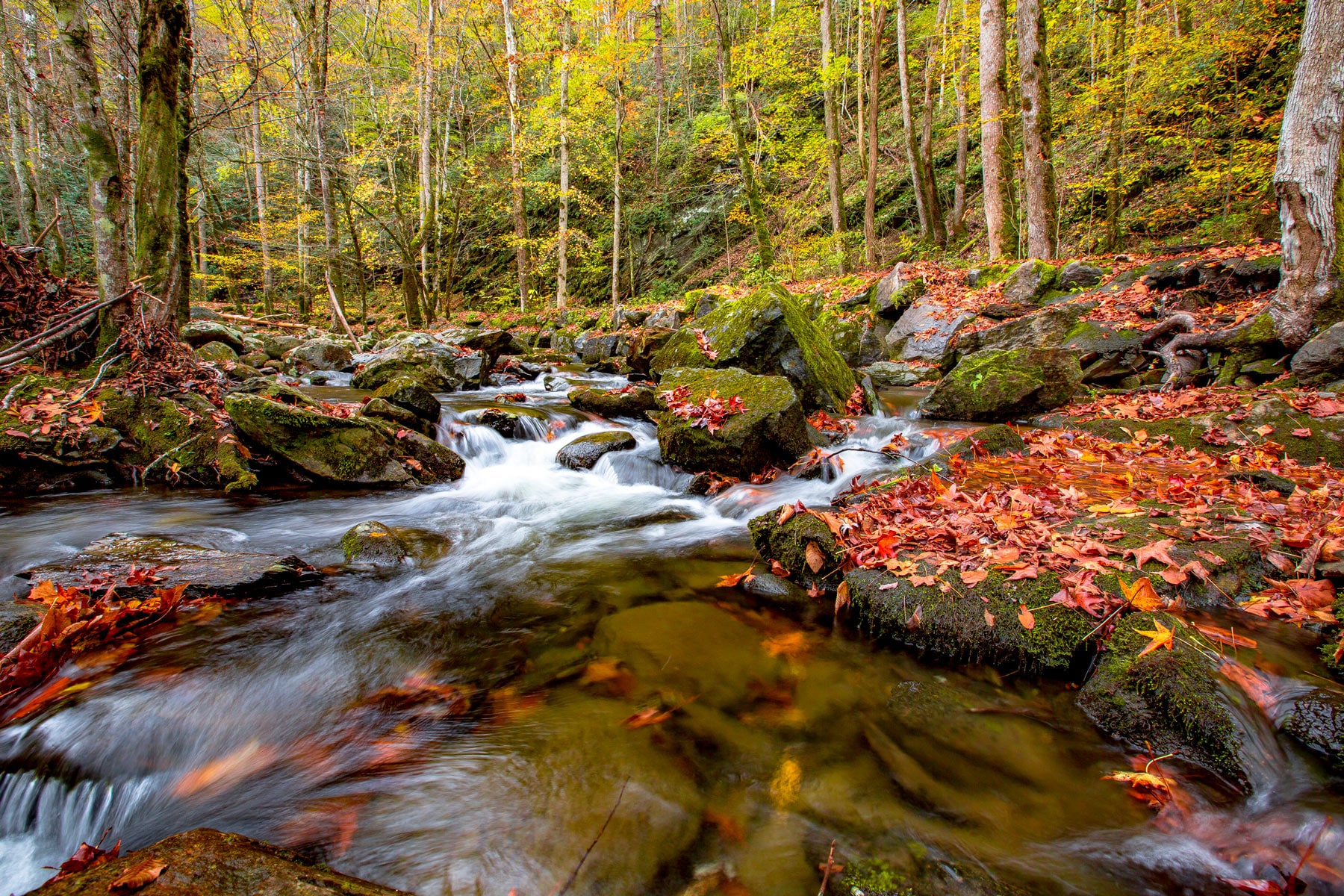
Overlooks and creeks are ablaze with the colorful greetings of autumn and everywhere is a great spot to see this once-a-year feast for the eyes.
Take in the View from Clingmans Dome
The observation tower at Clingmans Dome provides sweeping views of the entire park and the surrounding mountains and lakes.
On clear days you can see over 100 miles in any direction. This highest peak in the park is easy to access for visitors of all ages and abilities and a must for any visit.

Tour the Historic Cabins and Mills
The historic cabins and buildings that dot the park are part of what makes Great Smoky Mountains National Park so great if you’ll excuse the pun.
Seriously though, these beautiful rustic pioneer structures hearken back to the hard scrabble life forged by early settlers of the area and add to the beauty of the park.
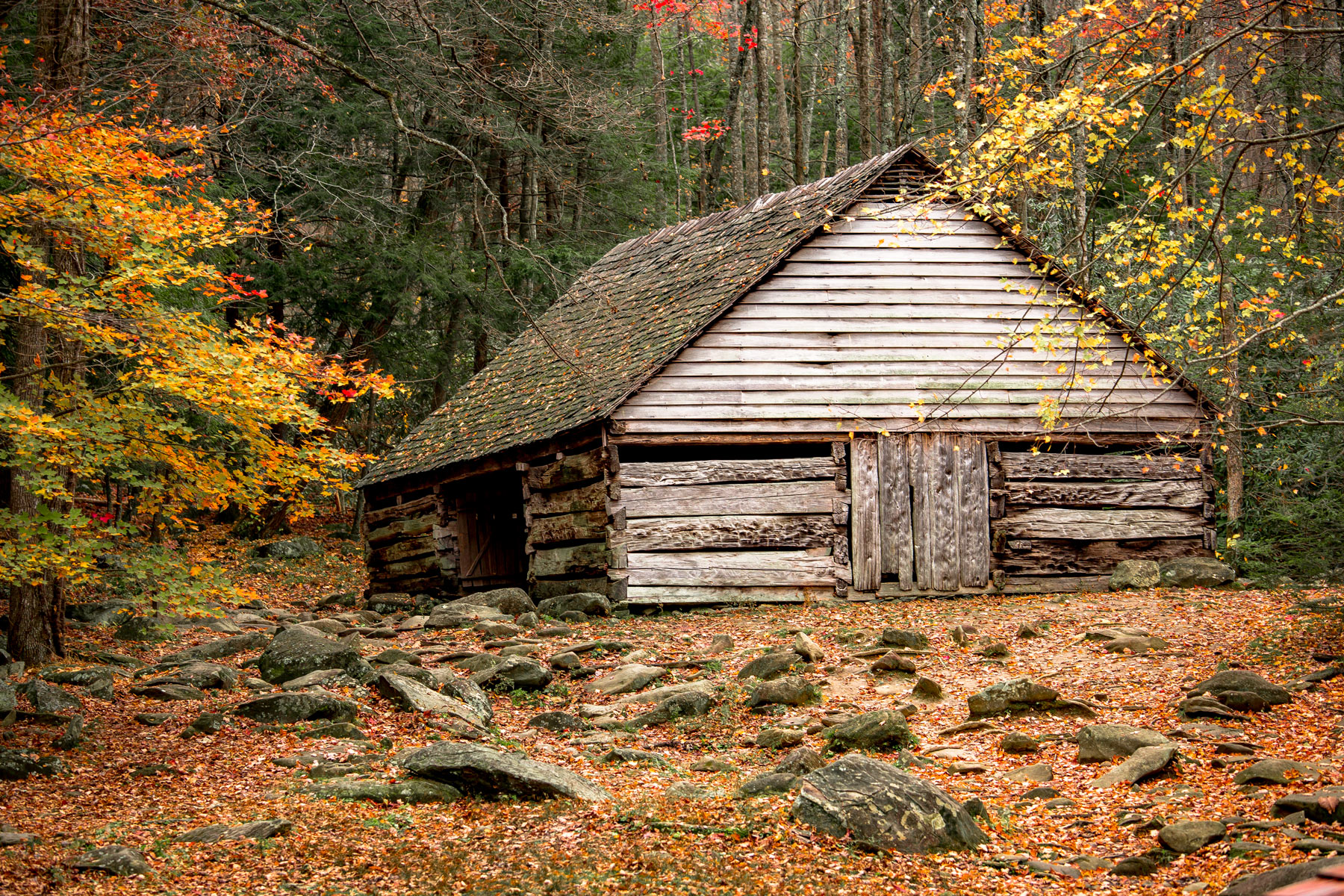
There’s lots of great information on these historic structures in the park visitor centers and many are staffed by volunteers and interpreters who can tell you all about what life like for the people who built these frontier settlements.
Ditch the Tourists and Head for Cataloochee
Far from the hustle and bustle of Gatlinburg and the tourists you’ll find this peaceful mountain valley.
Known as Cataloochee, the valley was formerly home to a small mountain community before the park was established.
Now you can explore the remaining historic homes and buildings and take in the peaceful mountain charm that once made this an ideal place to settle.
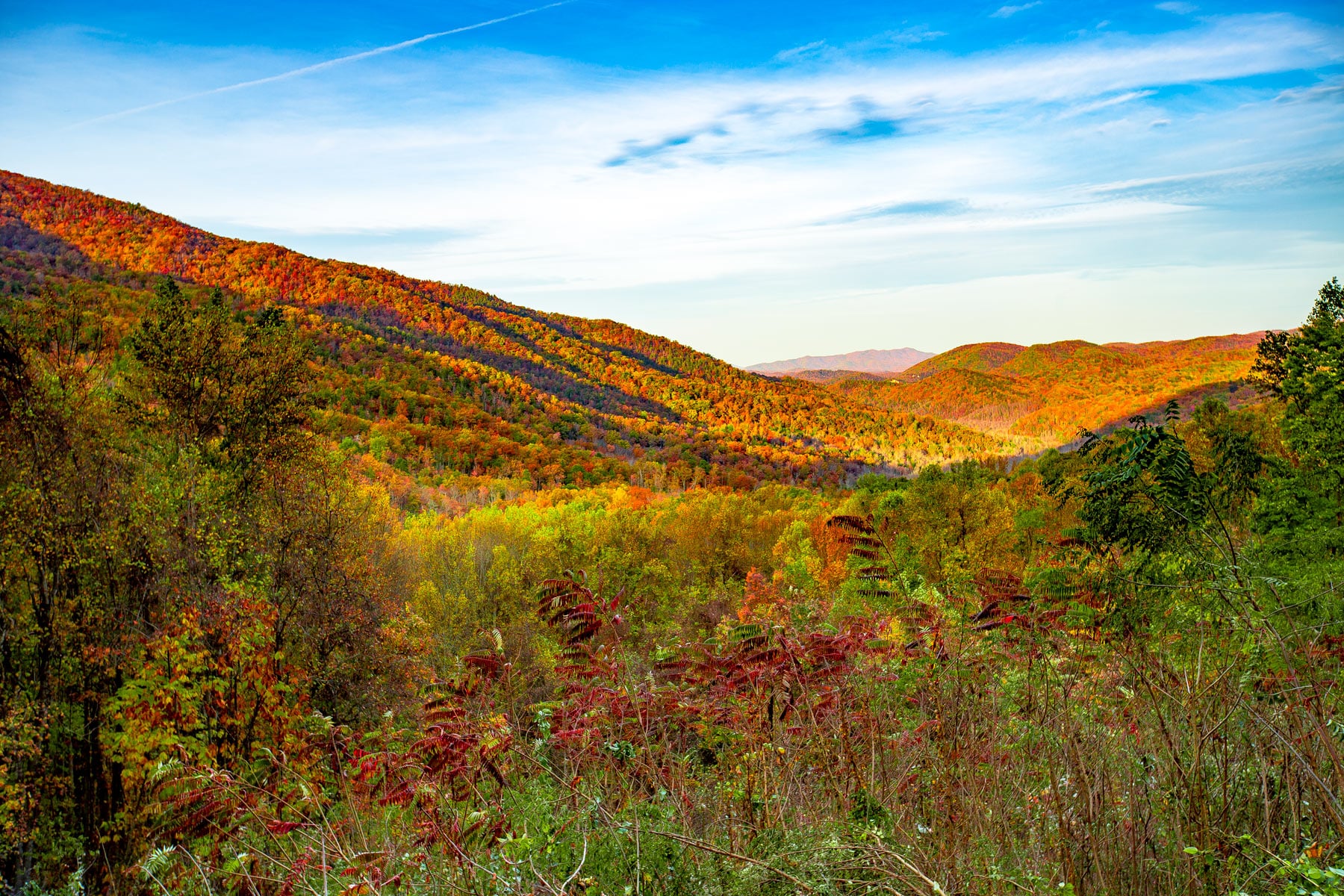
There is also a herd of elk that can be commonly seen grazing the pastures of this peaceful valley, some of the bull elk can grow to immense sizes with very large antler racks.
You can also spot wild turkeys and a number of other interesting wildlife in this scenic and quiet part of the park.
2. Andrew Johnson National Historic Site
As a retired history teacher who enjoys nothing more than researching and writing articles for More Than Just Parks, I relish the opportunity to take a deeper dive into the past.
This is one reason why I recommend Tennessee’s National Parks because there are some truly fascinating historical sites in the Volunteer State. A case in point is the Andrew Johnson National Historic Site.
The Andrew Johnson National Historic Site is dedicated to preserving the legacy of the 17th President of the United States, Andrew Johnson. Johnson served as President from 1865 to 1869, succeeding Abraham Lincoln after his assassination.
The site was established as a National Historic Site in 1935, and it includes Johnson’s two homes, tailor shop, and grave site.
The homes, one of which was built in 1826 and served as Johnson’s main residence, and the other built in 1869, were restored to their appearance during Johnson’s presidency. The tailor shop, where Johnson worked before entering politics, serves as a museum that showcases his life and career.
The Andrew Johnson National Historic Site provides insight into the life and presidency of one of the most controversial figures in American history.

Things To Do At The Andrew Johnson National Historic Site
I recommend beginning your visit at the visitors center.
Here you will find the site’s 13 1/2 minute orientation film and the Eastern National bookstore. Adjoining the Visitor Center, the Memorial Building houses the presidential museum, as well as Andrew Johnson’s original 1830’s Tailor Shop.
Andrew Johnson’s Early Home tells the story of the tailor-turned-politician. Andrew and Eliza’s family lived in this house from the 1830’s until 1851, when they moved into the larger Homestead several blocks away.
After visiting the early home you can take a tour of his homestead (1851-75) where Johnson lived for 24 years, both before and after his presidency.
Johnson was only Democrat from a southern state who did not leave the Senate during the Civil War. His home was occupied during the war by soldiers and left in disrepair.
Visitors can also see The National Cemetery where Andrew Johnson and his family are buried at the crest of Monument Hill.

3. Appalachian National Scenic Trail
Need a good stretch of the legs? Among the Tennessee National Parks you will be able to explore the longest hiking trail in the world.
The Appalachian National Scenic Trail, also known as the Appalachian Trail, is a scenic hiking trail that runs along the Appalachian Mountains from Springer Mountain in Georgia to Mount Katahdin in Maine.
The trail is approximately 2,190 miles long and passes through 14 states in the eastern United States. The idea of a long-distance trail along the Appalachian Mountains was first proposed in 1921 by forester Benton MacKaye.
Over the next several decades, volunteers and organizations worked to build and maintain the trail, and in 1968, the trail was officially designated as the Appalachian National Scenic Trail by the National Trails System Act.
Today, the Appalachian Trail is one of the most popular long-distance hiking trails in the world, and thousands of people hike all or part of it each year. It is also an important resource for wildlife and plant species, providing critical habitat and corridors for many species that would otherwise be isolated from one another.
The Appalachian Trail is protected and managed by the National Park Service and a network of other federal and state agencies, as well as local trail-maintaining clubs.
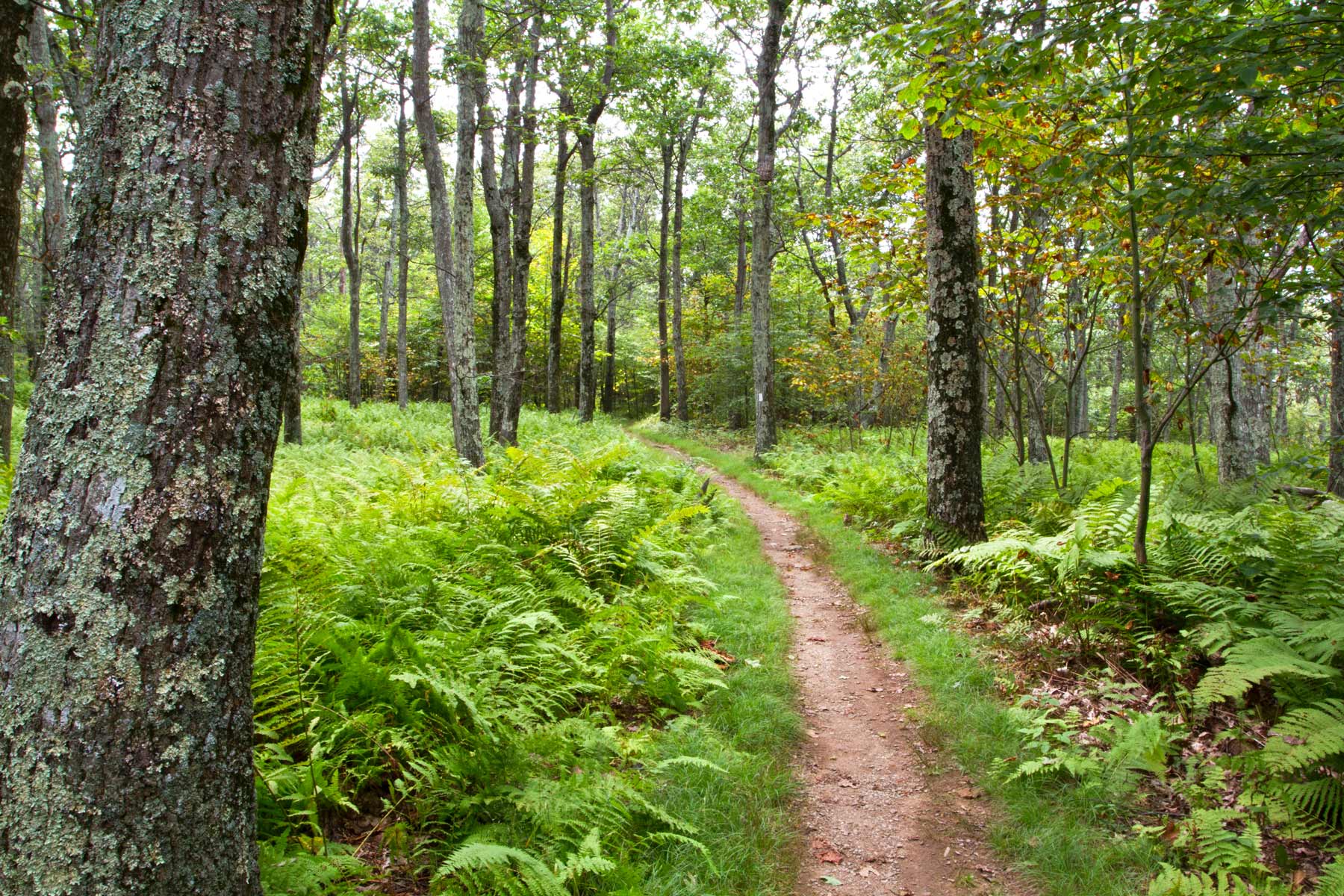
4. Big South Fork National River & Recreation Area
One of the beautiful Tennessee National Parks encompasses 125,000 acres of the Cumberland Plateau. It’s the Big South Fork National River and Recreation Area. This breathtaking site protects the free-flowing Big South Fork of the Cumberland River and its tributaries.
The area boasts miles of scenic gorges and sandstone bluffs, is rich with natural and historic features and has been developed to provide visitors with a wide range of outdoor recreational activities.
Outdoor activities are plentiful and include the following:
- Enjoy A Sunrise Or Sunset: There are overlooks all along the Big South Fork River gorge where you can catch the suns first or last rays of the day.
- Take A Hike: You can choose from any number of hikes ranging from a lazy stroll along the river to a multi-day hike through the backcountry.
- Go Horseback Riding: Big South Fork has miles of horse trails, stabling facilities at Bandy Creek Stables and even two equestrian campgrounds at Station Camp in Tenn. and Bear Creek in Ky.
- See The Wildflowers: In the spring time you can find spectacular displays of wildflowers and native plants along many trails in the park.
- Biking, Climbing Or Whitewater Rafting: Try whitewater rafting the Big South Fork River, mountain biking through the backcountry or rock climbing on the miles of cliff lines throughout the park. (Source: NPS)
More Tennessee National Parks
5. Chickamauga & Chattanooga National Military Park
If you’re a history buff then you’ll discover that the Tennessee National Parks are a great place to have a blast with the past. One of my favorite sites is the Chickamauga & Chattanooga National Military Park.
Chickamauga & Chattanooga National Military Park is a military park located in northern Georgia and southeastern Tennessee.
The park was established in 1890 to commemorate the battles of Chickamauga and Chattanooga, two significant battles fought during the American Civil War.
The Battle of Chickamauga was fought on September 19 and 20, 1863, and was one of the bloodiest battles of the Civil War. The Confederate Army, under the command of General Braxton Bragg, defeated the Union Army, under the command of General William Rosecrans, in a hard-fought battle that lasted two days.
The Battle of Chickamauga was fought on September 19-20, 1863, and resulted in a Confederate victory. The Battle of Chattanooga was fought on November 23-25, 1863, and resulted in a Union victory.
These battles were crucial in the Civil War as they helped secure Union control of Tennessee and opened the door for a deep thrust into the Confederate heartland.
Created To Preserve The History & Honor The Memory Of Those Who Fought There
The Chickamauga & Chattanooga National Military Park was created to preserve the history and memory of these important battles and to honor the soldiers who fought in them.
The park includes over 9,000 acres of preserved battlefield land, as well as monuments, markers, and interpretive exhibits. Visitors can tour the battlefields, visit the museum, and hike the trails to gain a better understanding of the history of the Civil War and the role these battles played in shaping the nation.
Today, the Chickamauga & Chattanooga National Military Park continues to be an important place for remembering and honoring the sacrifices made by soldiers during the Civil War, and it remains a popular destination for history enthusiasts, tourists, and educational groups.

RELATED: Top 10 BEST Civil War Sites in America
And If You’re A History Buff Like Me . . .
If you love history as much as I do and you’re particularly interested in how this conflict impacted the men who fought in it then I heartily recommend Six Armies in Tennessee: The Chickamauga and Chattanooga Campaigns by Steven E. Woodworth.
Woodworth is a gifted writer who uses primary sources skillfully to take his readers into the hearts and minds of the everyday soldiers.
6. Cumberland Gap National Historical Park
If you prefer the beauty of nature to battlefields than the Tennessee National Parks will not disappoint you. One of the most breathtaking places I’ve ever been to is the Cumberland Gap National Historical Park.
The Cumberland Gap National Historical Park is located in the Appalachian Mountains of Kentucky, Tennessee, and Virginia and is dedicated to preserving the history of the Cumberland Gap, a natural break in the mountain range that was used as a major transportation route for centuries.
The park was established in 1940 and covers over 20,000 acres of land.
The Cumberland Gap has a rich history dating back to the Native American civilizations that used it as a transportation route and hunting ground.
During the late 1700s and early 1800s, the gap was a major transportation route for pioneers, settlers, and traders traveling westward. In the Civil War, both Union and Confederate forces used the gap as a strategic point, leading to several battles in the area.

The Park Is A Popular Destination For Nature Enthusiasts & History Buffs Alike
Today, the Cumberland Gap National Historical Park is a popular destination for outdoor enthusiasts, history buffs, and tourists.
The park offers scenic views of the Appalachian Mountains, hiking trails, camping, and picnic areas. Visitors can also tour historic sites and museums, including the Hensley Settlement, a preserved pioneer community, and the Pinnacle Overlook, which provides a breathtaking view of the surrounding landscape.
The Cumberland Gap National Historical Park provides a unique opportunity to explore the natural beauty of the Appalachian Mountains and to learn about the rich history of the region, making it an important part of American cultural and natural heritage.

7. Fort Donelson National Battlefield
Fort Donelson National Battlefield is located in Tennessee and is dedicated to preserving the history of the Battle of Fort Donelson, which took place in February 1862 during the American Civil War.
The fort was named after Confederate General Daniel S. Donelson and was one of the first major Union victories in the war.
The Battle of Fort Donelson was a decisive Union victory that resulted in the capture of over 12,000 Confederate soldiers and helped to secure Union control of Tennessee. The battle also marked the first time in American history that a Confederate fortress was taken by storm, and it set the stage for future Union advances in the western theater of the war.
Fort Donelson National Battlefield was established in 1928 to commemorate the Battle of Fort Donelson and to preserve the history of the Civil War in the western theater.
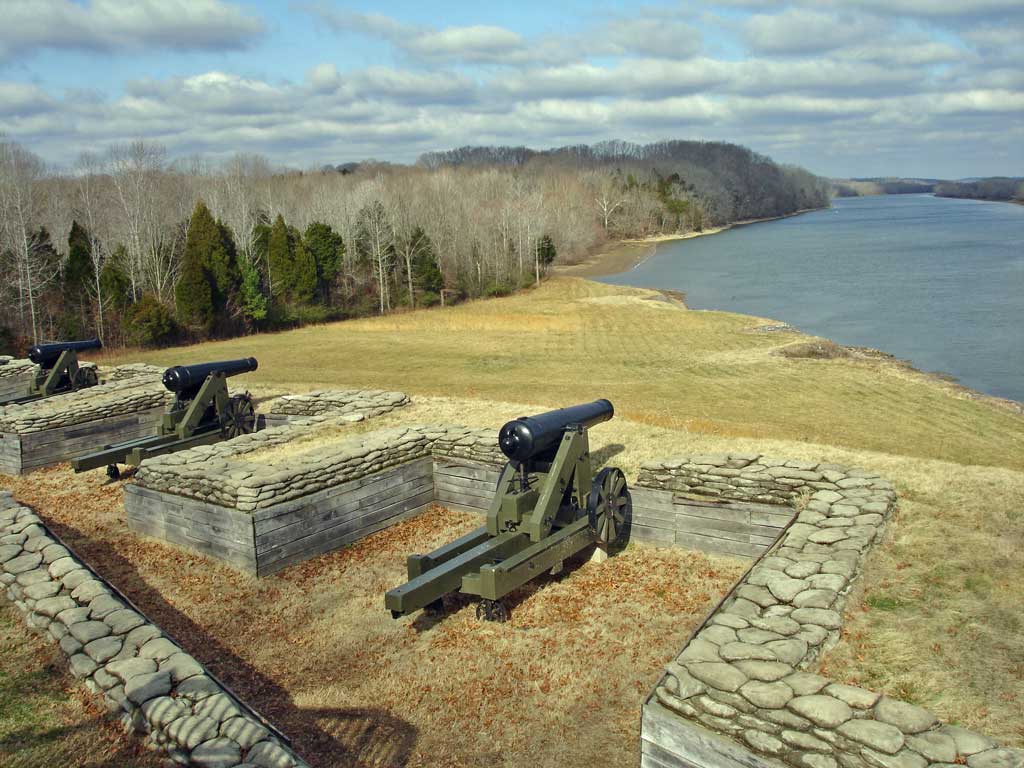
The park covers over 1,200 acres and includes monuments, markers, and interpretive exhibits that tell the story of the battle and the soldiers who fought there. Visitors can tour the battlefield, visit the museum, and hike the trails to gain a better understanding of the history of the Civil War and the role that Fort Donelson played in shaping the nation.
Today, Fort Donelson National Battlefield remains an important place for remembering and honoring the sacrifices made by soldiers during the Civil War, and it continues to be a popular destination for history enthusiasts, tourists, and educational groups.
RELATED: Top 10 BEST Civil War Sites in America
Things To See & Do At Fort Donelson
Here are some things you can do at Fort Donelson:
- Take a guided tour: The park offers guided tours of the battlefield and the fort, which provide insight into the history of the site and the role it played in the Civil War.
- Explore the fort and earthworks: You can explore the remains of the fort and the earthworks, which were used to defend the site during the Civil War.
- Visit the visitor center: The visitor center has exhibits on the history of the site, including artifacts and interactive displays. You can also watch a short film about the battle.
- Hike the trails: The park has several hiking trails that offer scenic views of the battlefield and the surrounding area. The River Batteries Trail is a popular hike, which leads to the remains of two Confederate batteries on the Cumberland River.
- Attend ranger programs: The park offers a variety of ranger-led programs, including talks, walks, and educational programs for children. Check the park’s website for a schedule of events.
- Picnic: There are several picnic areas within the park where you can enjoy a meal surrounded by the natural beauty of the area.
- Fishing: The park has several streams and rivers where you can fish for bass, catfish, and other species.
- Visit nearby attractions: There are several other historic sites and attractions in the area, including the Tennessee River Freshwater Pearl Farm and Museum, Land Between the Lakes National Recreation Area, and the Fort Donelson National Cemetery.

8. Manhattan Project National Historical Park
Where can you go from the Great Smoky Mountains to the dawn of the nuclear age? Why Tennessee National Parks of course!
The Manhattan Project National Historical Park was established to commemorate the history and legacy of the Manhattan Project, the top-secret World War II program that developed the first atomic bombs.
The Manhattan Project was launched in 1942, with the goal of developing an atomic bomb before Nazi Germany could. The project brought together some of the world’s leading scientists, engineers, and military leaders, who worked in secret at several locations around the United States, including Los Alamos, New Mexico, Oak Ridge, Tennessee, and Hanford, Washington.
After three years of intense scientific and technological effort, the first atomic bomb was successfully detonated in July 1945 at Alamogordo, New Mexico. The bombs were later used in August of that year in the atomic bombing of Hiroshima and Nagasaki, Japan, which led to Japan’s surrender and the end of World War II.

Established To Commemorate The History & Legacy Of The Manhattan Project
The Manhattan Project National Historical Park was established in November 2015, to commemorate the history and legacy of the Manhattan Project.
The park consists of three sites: the Manhattan Project National Historical Park in Los Alamos, New Mexico, the Manhattan Project National Historical Park in Oak Ridge, Tennessee, and the Manhattan Project National Historical Park-Hanford in Washington.

Things To Do At The Sites
Here are some things you can do at the Manhattan Project National Historical Park:
- Take a guided tour: The park offers guided tours of each of the three locations, which provide insight into the history of the Manhattan Project and the role each site played in the development of the atomic bomb.
- Visit the visitor centers: Each location has a visitor center with exhibits on the history of the Manhattan Project, including artifacts and interactive displays. You can also watch a short film about the project.
- Explore the sites: Each location has unique features to explore, such as the K-25 building and X-10 Graphite Reactor in Oak Ridge, the B Reactor in Hanford, and the historic homes and laboratory buildings in Los Alamos.
- Attend ranger programs: The park offers a variety of ranger-led programs, including talks, walks, and educational programs for children. Check the park’s website for a schedule of events.
- Hike and bike: Oak Ridge has several hiking and biking trails, including the Melton Hill Greenway and the Haw Ridge Park trails.
- Visit nearby attractions: Each location has nearby attractions, such as the Museum of Science and Energy in Oak Ridge, the Hanford Reach National Monument in Hanford, and Bandelier National Monument in Los Alamos.
- Picnic: There are several picnic areas within the park where you can enjoy a meal surrounded by the natural beauty of the area.

9. Natchez Trace Parkway
The Natchez Trace Parkway is a scenic parkway and recreational trail that runs for 444 miles through the southern United States.
The parkway winds its way from Nashville, Tennessee to Natchez, Mississippi, following the historic Natchez Trace, a historic travel and trade route that was used by American Indians, settlers, and traders for thousands of years.

Established To Preserve The Historic & Cultural Resources Along The Trace
The Natchez Trace Parkway was established in 1938 as a way to preserve the historic and cultural resources along the trace, as well as to provide a scenic drive for visitors. The parkway is unique in that it is limited-access, meaning that there are no commercial or residential developments along the route, and it is designed to provide a quiet, natural setting for visitors to enjoy.
Along the parkway, visitors can explore historic sites, including old trading posts and Civil War battlefields, and see a variety of wildlife, including deer, turkey, and other animals. The parkway also features several campgrounds, picnic areas, and hiking trails, making it a popular destination for outdoor enthusiasts.
One of the highlights of the Natchez Trace Parkway is the scenic drive, which provides breathtaking views of the southern landscape, including rolling hills, forests, and open fields. Visitors can also stop at interpretive centers along the route to learn more about the history and cultural significance of the Natchez Trace.
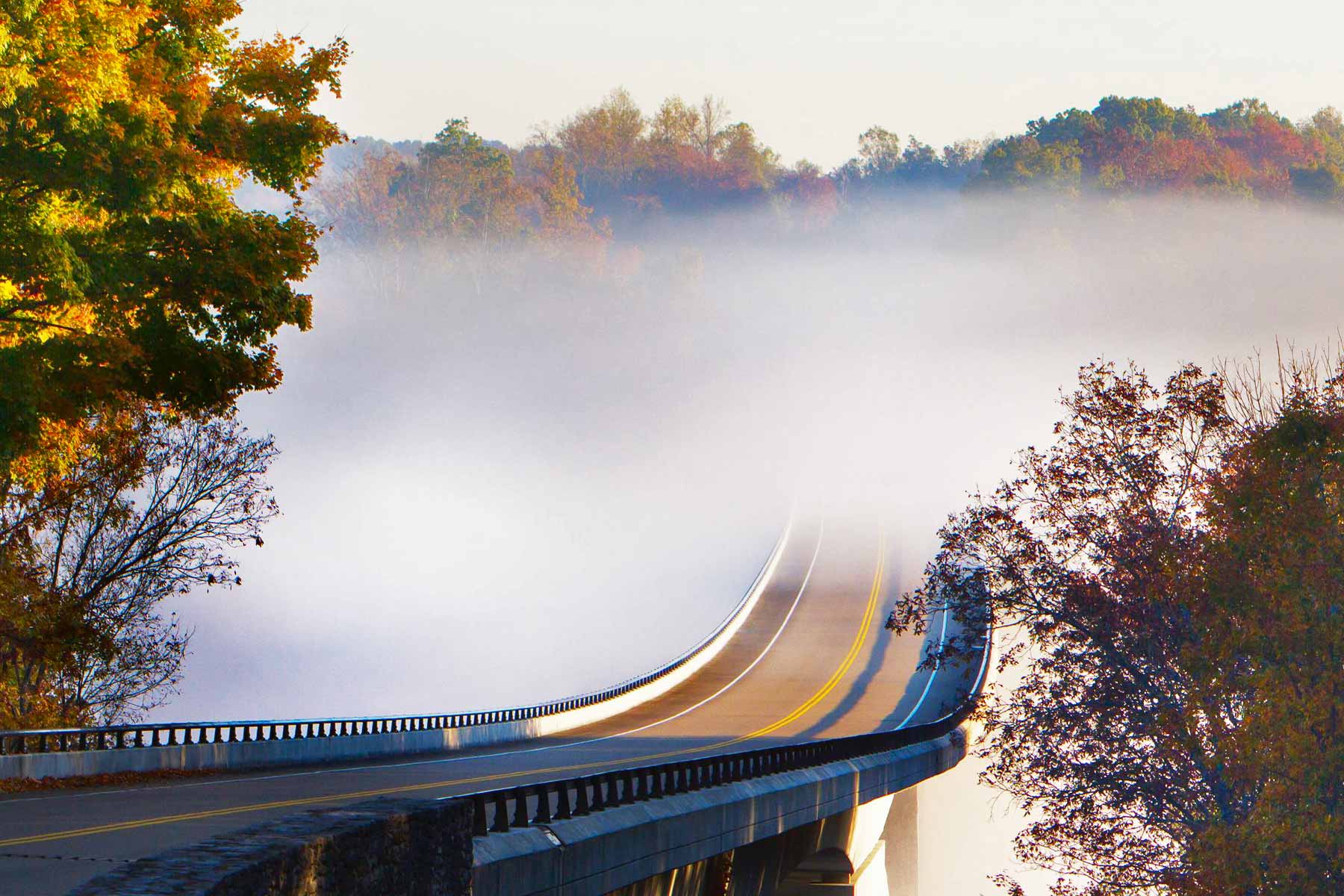
RELATED: Top 10 BEST USA Road Trips of a Lifetime
Still More Tennessee National Parks
10. Natchez Trace Scenic National Trail
The Natchez Trace Scenic National Trail is a 444-mile hiking and horseback riding trail that runs from Natchez, Mississippi to Nashville, Tennessee. The trail follows the historic Natchez Trace, a historic travel and trade route that was used by American Indians, settlers, and traders for thousands of years.
The Natchez Trace Scenic National Trail is one of the few national scenic trails in the United States and is managed by the National Park Service. The trail is designed for non-motorized use and is open to hikers, horseback riders, and cyclists, providing a unique and peaceful way to experience the natural beauty of the southern United States.
Along the trail, visitors can explore the diverse southern landscape, including rolling hills, forests, and open fields. They can also see a variety of wildlife, including deer, turkey, and other animals, and visit historic sites, including old trading posts and Civil War battlefields.
In addition to its natural beauty, the Natchez Trace Scenic National Trail is also a great place to learn about American history and the cultural significance of the Natchez Trace.
Visitors can stop at interpretive centers along the route to learn more about the history of the trace, the people who used it, and the cultural and natural resources that are found along the way.
Best Places To Visit
Imagine what it was like to journey on the Old Trace. The pioneers endured bad food, bugs, disease, heat, swollen rivers, and dangerous swamps.
You don’t have to imagine if you follow the Sunken Trace.
The good news is that it only will take you five minutes, instead of the endless days these folks endured, to walk this trail.
Let your imagination carry you back to the early 1800s and be thankful you weren’t there to share in these privations.
11. Obed Wild & Scenic River
One of the lesser known yet stunning places to see among the Tennessee National Parks is the Obed Wild & Scenic River.
The Obed Wild & Scenic River is a protected area located in eastern Tennessee, near the city of Crossville.
The river and its tributaries are known for their stunning scenery, recreational opportunities, and unique geology and history.
The Obed Wild & Scenic River was designated as a Wild & Scenic River by the U.S. Congress in 1976, which protects the river and its surrounding area from development and ensures that it remains free-flowing and accessible to the public for future generations to enjoy.
It’s known for its world-class whitewater rafting and kayaking, as well as its fishing and other recreational opportunities. The river and its tributaries flow through deep gorges and towering cliffs, offering breathtaking views and a unique landscape for visitors to explore.
In addition to its natural beauty, the Obed Wild & Scenic River is also rich in cultural and historical significance.
Visitors can explore several historic sites along the river, including old homesteads, mining operations, and Civil War battlefields, as well as visit several interpretive centers to learn more about the history and cultural significance of the area.
Still More Tennessee National Parks
12. Overmountain Victory National Historic Trail
The Overmountain Victory National Historic Trail is a 330-mile trail that follows the route taken by Patriot militia during the American Revolutionary War.
The trail runs from Virginia through Tennessee and North Carolina, and marks the journey of the Overmountain Men, a group of militia from the Appalachian region, who marched to the Battle of Kings Mountain in South Carolina in 1780. This battle was a pivotal moment in the war, as it marked the first major American victory against British forces in the southern colonies.
The idea of preserving the Overmountain Victory route as a historic trail was first proposed in the 1970s, and in 1980, the trail was officially established as a unit of the National Park Service.
The trail is unique in that it follows a largely rural route through some of the most remote and rugged areas of the Appalachian Mountains, offering a glimpse into the history and culture of the region.
Today, the Overmountain Victory National Historic Trail is a popular destination for history buffs, hikers, and outdoor enthusiasts. The trail is marked with signs, markers, and interpretive panels, and offers opportunities for hiking, camping, and horseback riding. It is a valuable resource that helps to preserve the rich history of the American Revolution and the Overmountain Men, and provides a glimpse into the rugged beauty of the Appalachian Mountains.
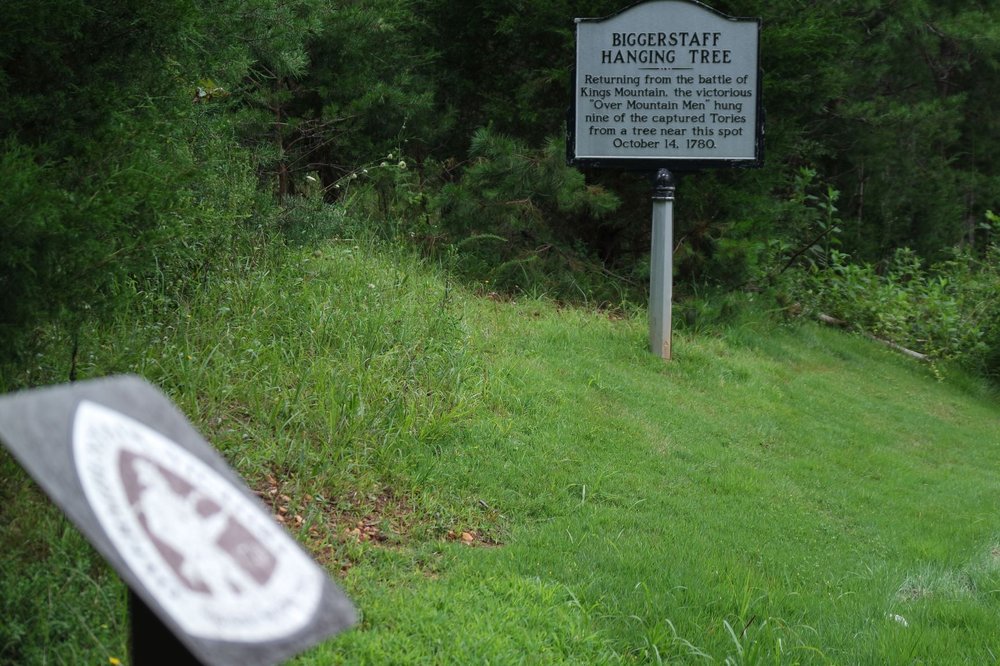
CHECK OUT: 10 BEST Revolutionary War Sites In America
13. Shiloh National Military Park
Shiloh National Military Park was established in 1894 to preserve the site of the Battle of Shiloh, which was fought on April 6-7, 1862, during the American Civil War. The battle was a major engagement that resulted in over 23,000 casualties.
The park covers an area of over 4,200 acres and includes the battlefield and several monuments and memorials to the soldiers who fought and died there. The park also contains the Shiloh National Cemetery, which is the final resting place of more than 3,500 Union soldiers.
Visitors to the park can take a driving tour of the battlefield, visit the Shiloh Battlefield Visitor Center, which features exhibits and displays about the battle and the Civil War, and explore the park’s hiking trails. The park also offers ranger-led programs and educational opportunities for visitors of all ages.
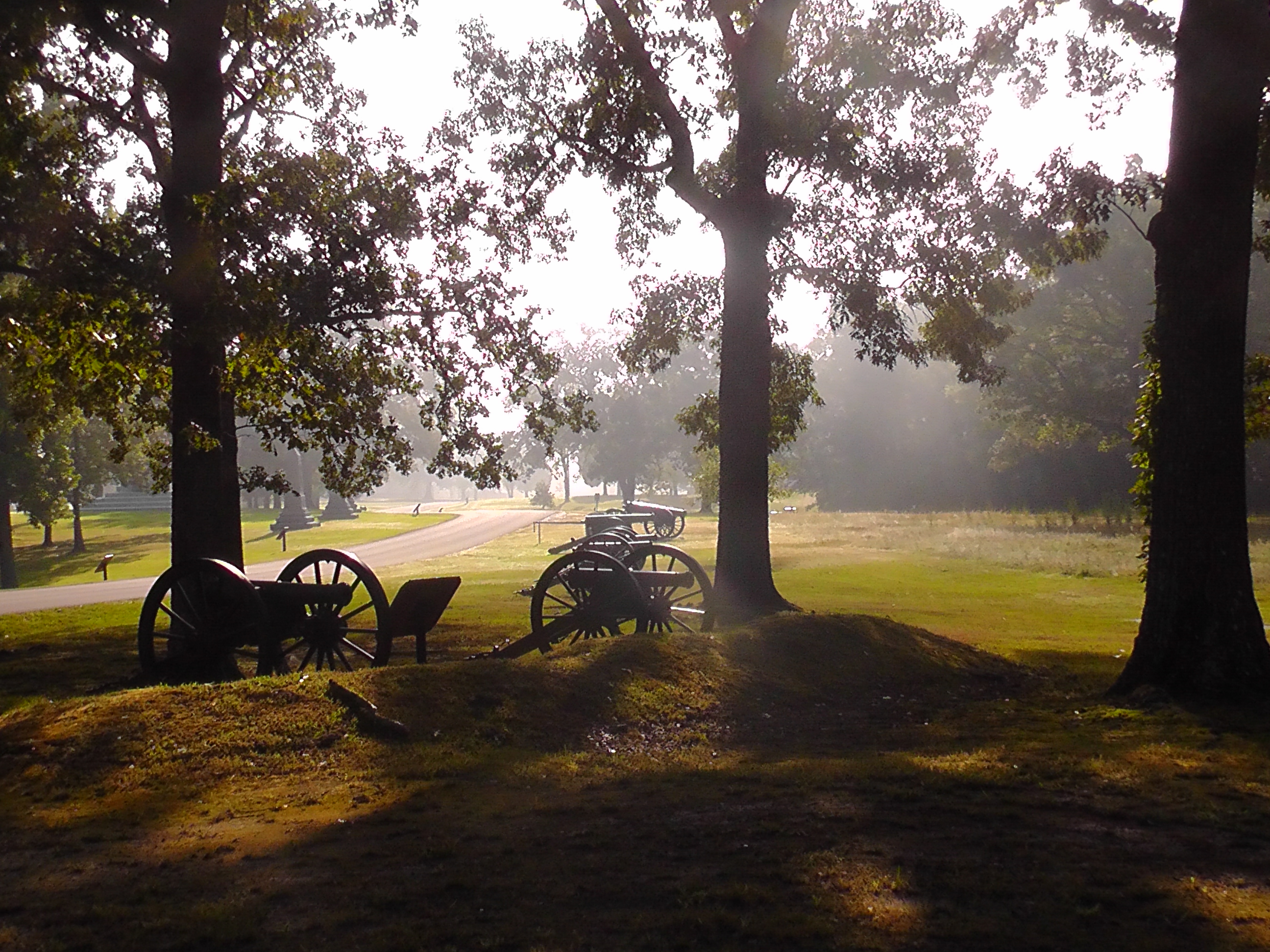
The Battle Of Shiloh
The Battle of Shiloh was a major engagement fought on April 6-7, 1862, during the American Civil War. The battle took place in southwestern Tennessee, near the Tennessee River, and involved the Union Army of the Tennessee, commanded by Major General Ulysses S. Grant, and the Confederate Army of the Mississippi, commanded by General Albert Sidney Johnston and later General P.G.T. Beauregard.
The battle began when Confederate forces launched a surprise attack on Union forces in the early morning of April 6, catching them off guard and driving them back towards the Tennessee River. However, Union reinforcements arrived throughout the day and were able to stabilize the Union line. The fighting was fierce and chaotic, with both sides suffering heavy casualties.
On the second day of the battle, the Union forces launched a counterattack, driving the Confederates back and ultimately securing a Union victory. The battle was a significant turning point in the Civil War, as it demonstrated the ability of Union forces to hold their ground against Confederate attacks, and it opened the way for the Union to move deeper into the Confederate heartland.
The Battle of Shiloh was one of the bloodiest battles of the Civil War, with over 23,000 casualties. It was a particularly brutal and traumatic battle for both sides, as soldiers experienced intense fighting, high casualties, and horrific scenes of death and destruction.
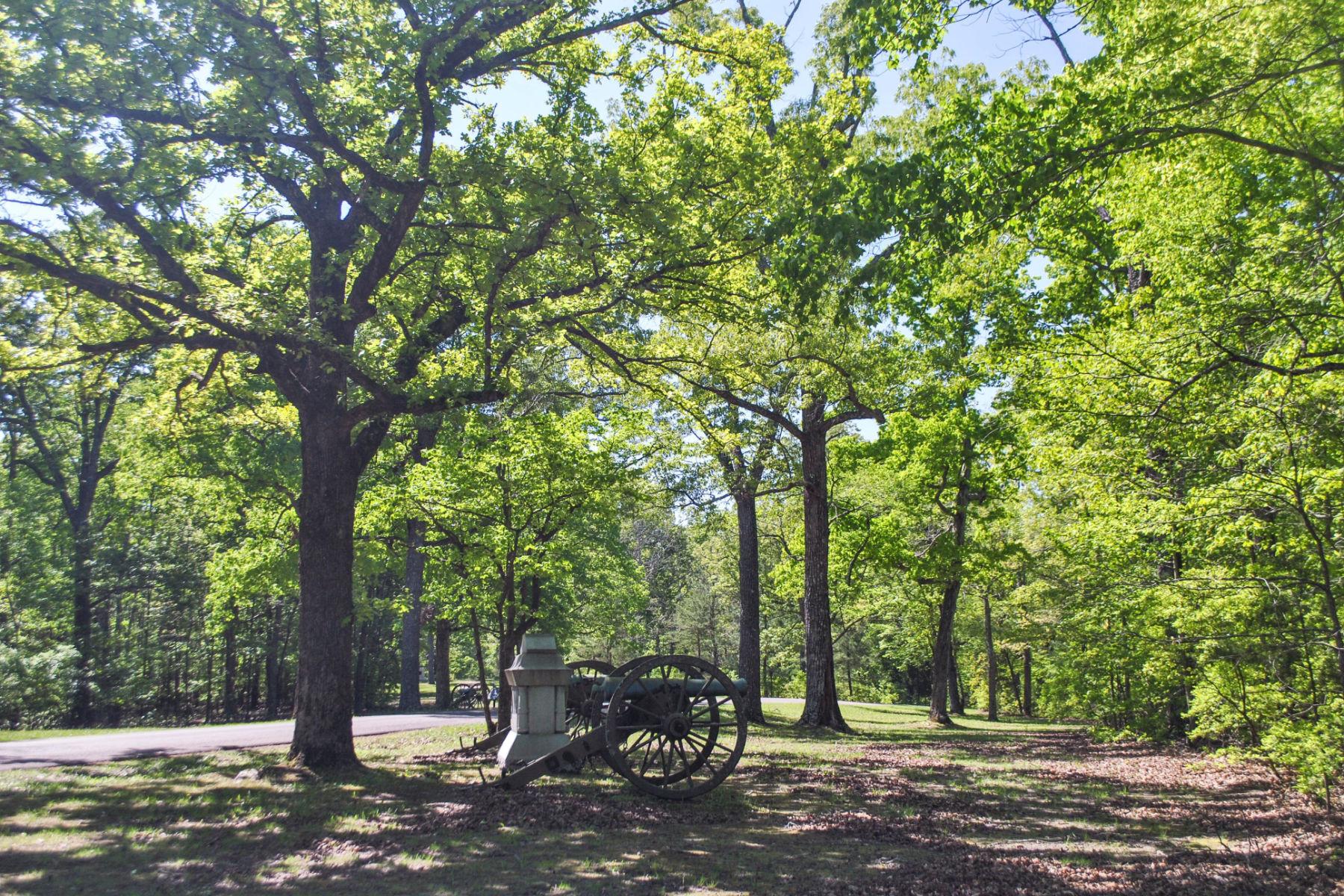
A Few Of My Favorite Places To Visit At The Park
At Shiloh Military Park visitors can dive into the past. Things to do include:
- Museums/Interpretive Centers: Both the Shiloh Battlefield and the Corinth Civil War Interpretive Center have large exhibit spaces dedicated to showing visitors the tools of war, the people who used those tools, and the effects of their use.
- Audio Visuals/Films: Both the Shiloh Battlefield and the Corinth Civil War Interpretive Center have excellent films and displays. Shiloh Battlefield is now showing the award-winning film, Shiloh: Fiery Trial. The Corinth Center has two short modern, state of the art films – one on the Battle of Shiloh and one on the Battle of Corinth, and a new movie entitled Corinth: A Town Amidst War.
- Self-Guided Auto Tour: The Shiloh Battlefield has a 12.7 mile auto tour route with 22 tour stops at such famous places as the Peach Orchard, the Hornet’s Nest, and the Albert Sidney Johnston death site. Visitors may also take auto and walking tours of Civil War Corinth, MS. This route includes surviving Civil War fortifications, homes used by Civil War Generals, and portions of the Corinth Battlefield.
- Ranger Programs: The park staff at Shiloh Battlefield conducts daily ranger-led interpretive programs during the peak season from Memorial Day to Labor Day.
- Living History: Both Shiloh and Corinth host several living history and special events throughout the year, mostly from April to October.
RELATED: 22 EPIC Pennsylvania National Parks Worth Visiting
Read About The Battle Of Shiloh
When it comes to the Battle of Shiloh, however, I’m going to recommend three books:
- Shiloh and the Western Campaign of 1862, by O. Edward Cunningham
- Shiloh, Bloody Shiloh by Wiley Sword
- Shiloh: The Battle That Changed the Civil War by Larry J. Daniel.

14. Stones River National Battlefield
Stones River National Battlefield is a protected area located in central Tennessee, near the city of Murfreesboro.
The park was established in 1927 to commemorate the Battle of Stones River, which took place on December 31, 1862, to January 2, 1863, during the American Civil War.
The Battle of Stones River was one of the bloodiest battles of the Civil War, with more than 23,000 soldiers killed, wounded, or missing. The Union forces, led by General William Rosecrans, were able to repel a Confederate attack and secure a strategic victory, which helped to maintain Union control of middle Tennessee and set the stage for further Union advances in the region.
Stones River National Battlefield was established to commemorate the sacrifices made by the soldiers who fought in the Battle of Stones River, and to preserve the historic and cultural resources associated with the battle. The park features a number of monuments and markers, including regimental monuments, cannons, and tablets, which commemorate the events of the battle and honor the soldiers who fought and died there.
In addition to its historical significance, Stones River National Battlefield is also a popular destination for outdoor enthusiasts, offering a number of recreational opportunities, including hiking, camping, and fishing.
Visitors can also explore the park’s historic visitor center, which features exhibits and educational programs that provide an in-depth look at the Battle of Stones River and its place in American history.

Things To Do At Stones River
The landscapes of Stones River National Battlefield offer visitors an array of historic and natural features to experience bicycling, hiking and walking.
If you are a history buff then two places I recommend visiting are Fortress Rosencrans and the Stones River National Cemetery.
If you are a film buff then you should know that outdoor filming activities [outside of areas managed as wilderness] involving five persons or less and equipment that will be carried at all times, except for small tripods used to hold cameras, is permitted.

15. Trail Of Tears National Historic Trail
Among the Tennessee National Parks is a place which commemorates a darker yet important chapter in American history.
The Trail of Tears National Historic Trail is a protected area that commemorates the forced relocation of the Cherokee Nation from their ancestral homelands in the southeastern United States to Indian Territory (present-day Oklahoma) in the 1830s.
This relocation was part of a larger policy of Indian removal implemented by the U.S. government during the 19th century, which resulted in the displacement and relocation of many Native American tribes across the country.
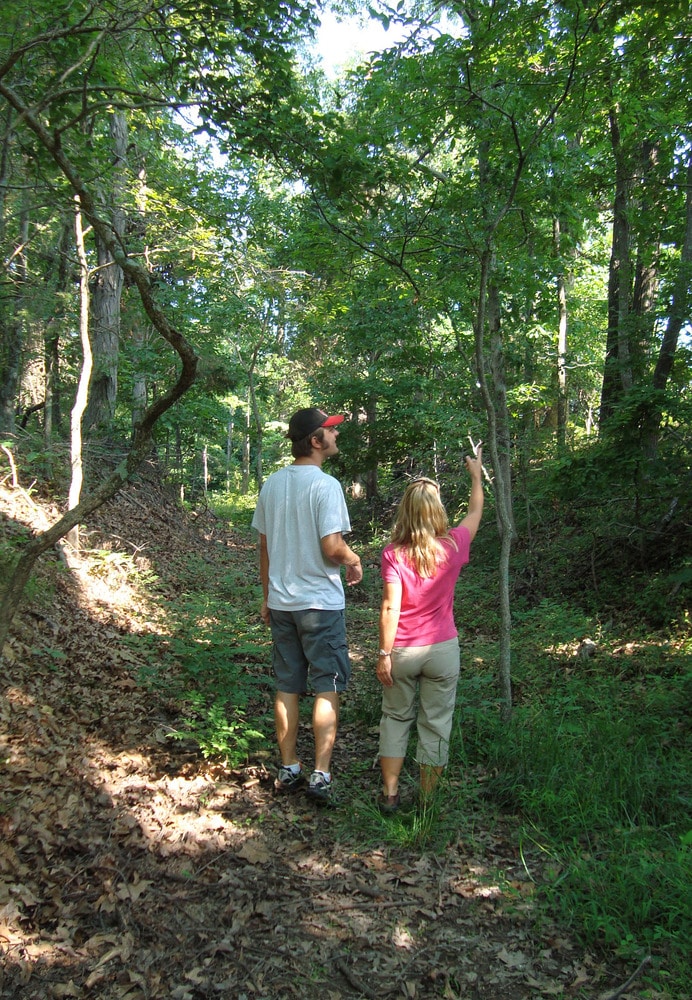
The Trail Follows The Route Taken By The Cherokee People
The Trail of Tears National Historic Trail follows the routes taken by the Cherokee people during their forced relocation in 1838-1839, which resulted in the deaths of thousands of people from exposure, disease, and starvation.
The trail is a powerful reminder of the tragic consequences of the U.S. government’s Indian removal policy, and serves as a testament to the resilience and strength of the Cherokee people.
The Trail of Tears National Historic Trail was established in 1987 as a National Historic Trail under the National Trails System Act, and is administered by the National Park Service. The trail consists of a network of land and water routes, and covers approximately 2,200 miles across nine states, including Alabama, Arkansas, Georgia, Illinois, Kentucky, Missouri, North Carolina, Oklahoma, and Tennessee.
Visitors to the Trail of Tears National Historic Trail can explore historic sites, monuments, and interpretive centers along the route, and learn more about the history and cultural significance of the trail and the forced relocation of the Cherokee Nation.
The trail is also popular among hikers, bikers, and other outdoor enthusiasts, offering a unique opportunity to experience the natural beauty of the southeastern United States while learning about its history and cultural heritage.

The Trail Of Tears
As the National Park Service reports, “U.S. Army troops, along with various state militia, moved into the tribe’s homelands and forcibly evicted more than 16,000 Cherokee Indian people from their homelands in Tennessee, Alabama, North Carolina, and Georgia.”
The impact of the resulting Cherokee “
Trail of Tears” was devastating.
More than a thousand Cherokee – particularly the old, the young, and the infirm – died during their trip west, hundreds more deserted from the detachments, and an unknown number – perhaps several thousand – perished from the consequences of the forced migration.
The tragic relocation was completed by the end of March 1839, and resettlement of tribal members in Oklahoma began soon afterward.” (Source: National Park Service)
If you want to learn more about this tragic chapter in American history then I recommend: Trail of Tears: The Rise and Fall of the Cherokee Nation by John Ehle.
The Trail Of Tears Today
This incredible trail stretches 5,043 miles across nine states.
You can follow the trail on foot, by vehicle, over water, by bicycle or by horse. Along the way, you will see sacred sites which tell the story of death and suffering as well as survival.

Check Out Our Film – National Parks A Love Story
We set out to create this film at the request of NPS & Interior to capture the feeling of our own love story with America’s National Parks. For us, our National Parks are more than sacred places.
For us, they are a hallowed ideal which represents the very best our country has to offer its people.
It is this fundamental idea that we, as Americans, can pass the legacy of our most treasured landscapes from one generation to the next unmarred by man’s ever-growing footprint which motivates us to celebrate the beauty of these special places.
Tennessee National Parks FAQ
Tennessee is known for its music scene, high-quality whiskey, and home to the Great Smokies. Country music artists and singers such as Elvis Presley and Dolly Parton hail from Tennessee, and the state has been home to many other popular musicians over the years.
The following is a list of the must-see historic sites in Tennessee:
Shiloh National Military Park
Chickamauga & Chattanooga National Military Park
Overmountain Victory National Historic Trail
Fort Donelson National Battlefield
Manhattan Project National Historical Park
Trail Of Tears National Historic Trail
Cumberland Gap National Historical Park
Natchez Trace Parkway
Stones River National Battlefield
Andrew Johnson National Historic Site
Graceland
The Hermitage
Beale Street Historic District
James K. Polk House
Sun Record Company
Why Trust Us About Tennessee National Parks?
We’re Jim Pattiz and Will Pattiz, collectively known as the Pattiz Brothers (and sometimes the Parks Brothers) and we absolutely LOVE the national parks.
You should probably know that we don’t just make this stuff up out of thin air. We’ve spent our entire adult lives exploring and filming America’s national parks and public lands.
We’ve worked with the National Park Service, the Department of Interior, USDA, and the U.S. Forest Service for years creating films on important places and issues. Our work has been featured in leading publications all over the world and even some people outside of our immediate family call us experts on the national parks.
Meet The Parks Brothers
Map Of Tennessee National Parks
List Of Tennessee National Parks
- Andrew Johnson National Historic Site
- Appalachian National Scenic Trail
- Big South Fork National River & Recreation Area
- Chickamauga & Chattanooga National Military Park
- Cumberland Gap National Historical Park
- Fort Donelson National Battlefield
- Great Smoky Mountains National Park
- Manhattan Project National Historical Park
- Natchez Trace Parkway
- Natchez Trace Scenic National Trail
- Obed Wild & Scenic River
- Overmountain Victory National Historic Trail
- Shiloh National Military Park
- Stones River National Battlefield
- Trail Of Tears National Historic Trail
We Hope You’ll Follow Our Journey

Our goal here at More Than Just Parks is to share the beauty of America’s national parks and public lands through stunning short films in an effort to get Americans and the world to see the true value in land conservation.
We hope you’ll follow our journey through the parks and help us to keep them the incredible places that they are. If you’re interested in joining the adventure then please sign up below!
Helpful Related Articles
Great Smoky Mountains NP Guide: Expert Guide to Great Smoky Mountains National Park
Things to Do in Great Smoky Mountains NP: 15 (INCREDIBLE) Things to Do Great Smoky Mountains National Park
Best East Coast National Parks: Top 10 Best East Coast National Parks Ranked
National Parks Ranked: ALL 63 US NATIONAL PARKS RANKED By Experts
Free Downloadable National Parks Map: LIST & MAP of National Parks By State (+ Printable Checklist)
Most Visited National Parks: Top 10 Most Visited US National Parks
Georgia National Parks: 10 Amazing Georgia National Parks Worth Visiting
South Carolina National Parks: 8 Epic South Carolina National Parks Worth Visiting
North Carolina National Parks: 12 Epic North Carolina National Parks Worth Visiting
National Parks Road Trip: 10 EPIC National Parks Road Trips (Expert Guide)
Virginia National Parks: 30 EPIC Virginia National Parks Worth Visiting (Helpful Guide + Photos)
Pennsylvania National Parks: 22 EPIC Pennsylvania National Parks Worth Visiting (Guide + Photos)
Maryland National Parks: 27 EPIC Maryland National Parks Worth Visiting (Helpful Guide + Photos)
Maine National Parks: An Epic Guide to Maine’s National Parks
Our goal here at More Than Just Parks is to share the beauty of America’s national parks and public lands through stunning short films in an effort to get Americans and the world to see the true value in land conservation.
We hope you’ll follow our journey through the parks and help us to keep them the incredible places that they are. If you’re interested joining the adventure, sign up below!

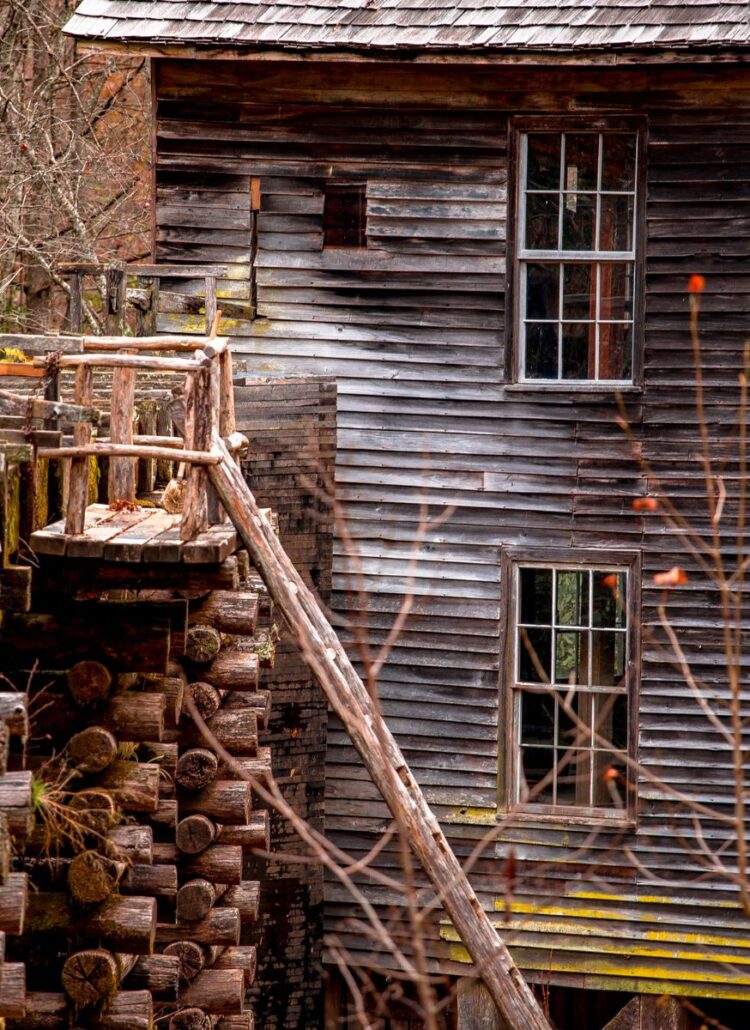
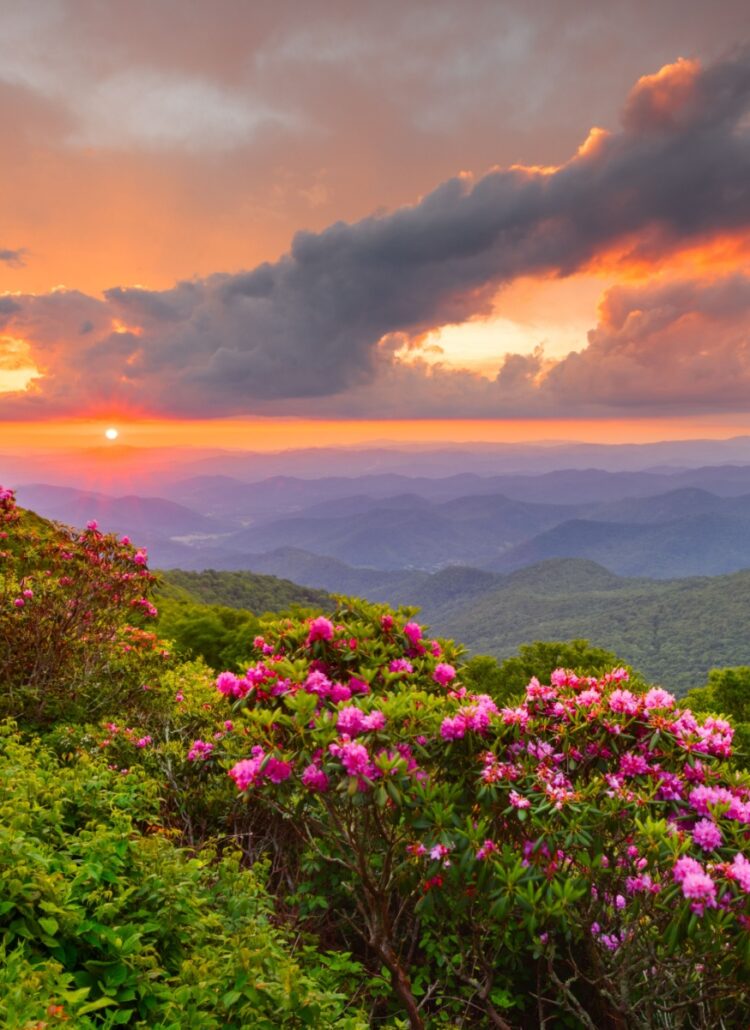


Leave a Reply